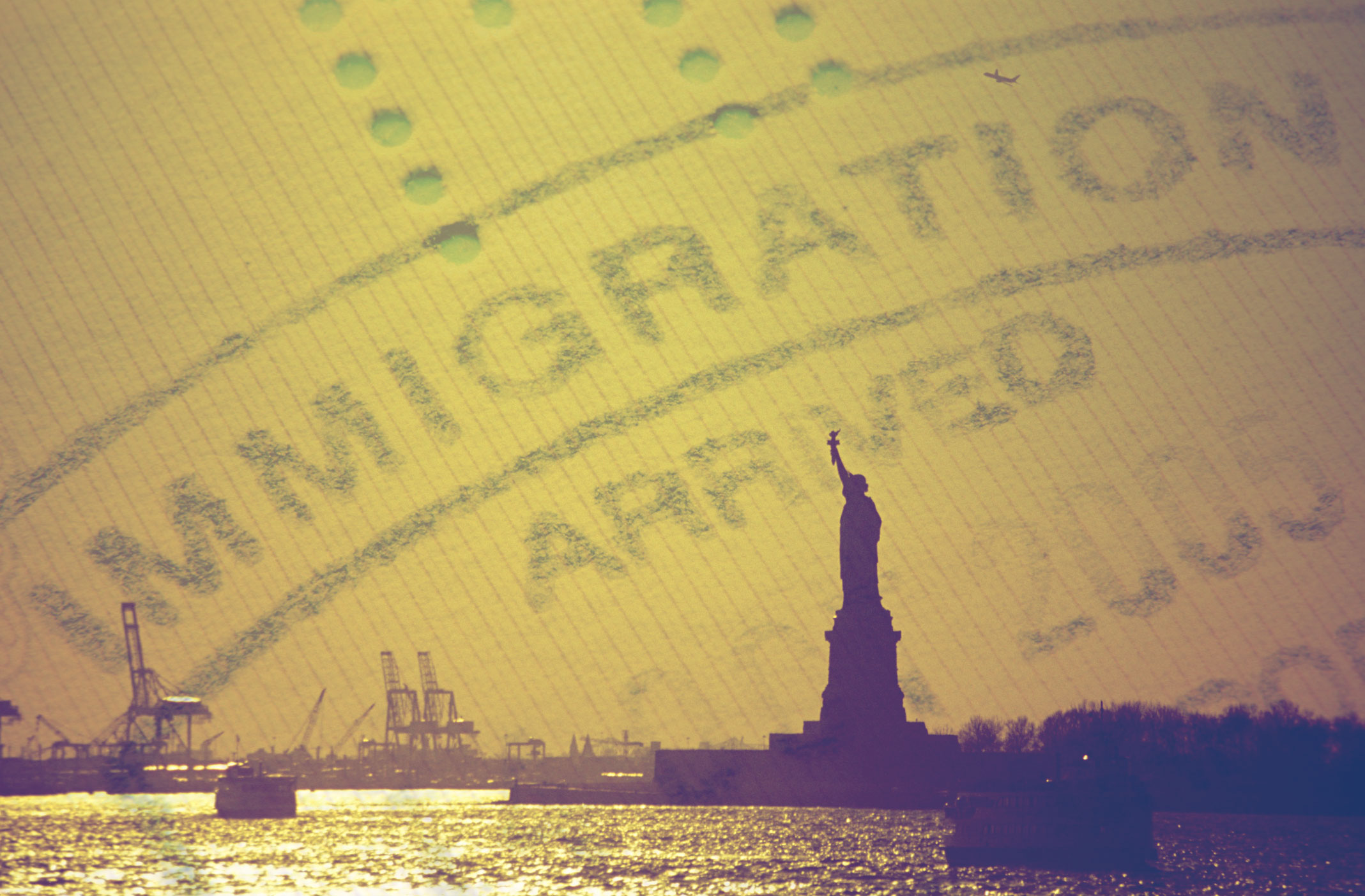Whoever moves into the White House in 2017 will face enormous pressure to take decisive action on how immigration admissions and rights are governed. The newest volume of the University of Virginia Miller Center’s nonpartisan First Year Project, released today, offers the next president advice on viable alternatives, viewed through the clarifying lens of history.
This election marks the first time in 50 years that Americans rank immigration among their top concerns. Although the presumptive Republican nominee, Donald Trump, has been largely responsible for this salience, his calls for the building of a massive wall on the Mexican border and the banning of Muslims from the United States have tapped into demographic and political conditions that historically have made immigration a fraught issue: a surge in America’s foreign population, economic dislocation and clear party differences over how to respond to these major changes.
The wave of immigration from Asia and Latin America – especially Mexico – over the past 50 years has brought the proportion of foreign-born residents in the United States to 14 percent, the highest level since the early part of the 20th century (when it was approximately 15 percent). It is no coincidence that immigration has proven a flash point for presidential elections, and a nettlesome problem for presidents, during the two periods in American history when the foreign-born population spiked and the country experienced major disruptions in the labor market.
The two most important immigration laws enacted during presidential first years represent the polarized positions in the ongoing struggle over how welcoming our nation should be to the foreign born who seek our shores.
The 1882 Chinese Exclusion Act, passed during the first year of Chester A. Arthur’s presidency, was the first national immigration law to prohibit a specific ethnic group from migrating to the United States. It established a nativist precedent that led over the next half-century to the enactment of several restrictive immigration laws, culminating in the 1924 legislation that imposed “national origin quotas,” which slowed immigration from southern and eastern Europe to a trickle and barred nearly all Asians from coming to America.
By contrast, the 1965 Immigration and Nationality Act, pushed through Congress amid a flurry of reforms during Lyndon Johnson’s first year in the White House after he won election to the presidency in his own right, did away with the xenophobic national origins quotas, but unintentionally loosed a flood of documented and undocumented immigration.
Amid what he calls the current “ugly and polarized campaign,” UVA law professor David Martin foresees objective conditions in 2017, most notably a shrinking undocumented population, that could prove auspicious for comprehensive immigration reform. He urges the next president to pursue a grand bargain that combines long-term enforcement with humane reforms that will create “earned legalization” for those who have long been residing in the United States.
Yet Gary Freeman of the University of Texas, Austin strongly rejects Martin’s clarion call for the next president to “go comprehensive, go bold.” He warns that even sophisticated and balanced efforts at comprehensive reform will degenerate into the same destructive debates that have thwarted the attempts of George W. Bush and Barack Obama to solve the immigration conundrum.
Instead, he urges immediate attention to what he asserts is the threat immigration poses to America’s national interest. He suggests avoiding “feel-good platitudes” – to wit, “America is a country of immigrants” – which “only harden polarized attitudes on the issue.” Beyond calling for the next president to launch a serious debate about the hard challenges large influxes of immigrants pose to economic and homeland security, Freeman calls for some incremental changes that will shore up America’s border. For example, he recommends a more careful vetting of refugees and settling as many of them as possible temporarily in camps and other territories where their safety can be guaranteed and they can be repatriated as soon as conditions permit.
Although she is more optimistic about reform than is Freeman, political science professor Anna O. Law of Brooklyn College, whose scholarship is steeped in the deep historical roots of nativism, shares his view that immigration policy must be forged on a meaningful dialogue that “de-escalates” the inflamed national discourse.
“Regardless of what one thinks of Trump’s immigration positions,” she acknowledges, “a significant portion of the American electorate believes immigrants are to blame for the nation’s economic and social ills.”
Like Freeman, she anticipates that the next president will face a divided electorate “with some who will continue to demonize immigrants, while others see it as the civil rights cause of this generation.”
This fractious political context differs considerably from the one that Daniel Tichenor, professor of political science at the University of Oregon, describes in chronicling LBJ’s “monumental” achievement. The Immigration and Nationality Act, he cautions, was the result of the “exceptional advantages” Johnson enjoyed in championing it, including its close association with his martyred predecessor and a broader civil rights agenda.
All the authors warn against the next president pursuing immigration reform alone, cautioning that such unilateral measures are, as Tichenor says, “at best a Band-Aid measure that satisfies few, or at worst a crassly partisan maneuver that is constitutionally suspect and worthy of harsh Congressional, judicial and popular sanctions.”
Media Contact
Article Information
May 24, 2016
/content/border-wars-pressures-building-tackle-immigration-us

